Electrical Conductivity of Glass Fiber-Reinforced Plastic with Nanomodified Matrix for Damage Diagnostic
Abstract
:1. Introduction
2. Materials and Methods
2.1. Epoxy System Nanomodification
2.2. Unidirectional and Cross-Ply Composite Lamination
3. Prediction of the Electrical Conductivity by the Structural Approach
3.1. Micro-Scale of Composite
3.2. Monolayer
3.3. Laminate
3.4. Verification
4. Voltage Distribution in Damaged Nanomodified Composite Plate
5. Delamination Crack Monitoring in Double-Cantilever Beams
5.1. Double-Cantilever Beam with Nanomodified Matrix
5.2. DCB with Nanomodified Interleave
6. Conclusions
- It was experimentally proved that electrical conductivity monitoring could be successfully used for open and interlaminar damage diagnostic of the GFRP lamina with the MWCNT-doped polymer matrix.
- The electrical conductivity of the GFRP composite was experimentally and theoretically considered on different structural levels. The addition of conductive MWCNT provided the conductivity of the epoxy matrix. Conductive matrix, in turn, provides conductivity of unidirectional monolayer with non-conductive fibers. Stack of conductive layers oriented in different angles provides conductivity of a multi-layered GFRP laminate. Well-known equations were applied to calculate the conductivity of the composite on these structural levels. Calculated and experimental electrical conductivities of multi-layered GFRP with MWCNT-modified epoxy matrix are in good agreement.
- Determining the location, quantification, and geometry of the damage in the MWCNT-modified GFRP lamina can be performed by monitoring the voltage distribution throughout the composite plate. The shape of equipotential voltage lines near the defect in the plate was precisely mimicking the geometry of the defect. Furthermore, voltage distribution in damaged GFRP plate calculated by FEM showed an excellent resemblance with the experimental data for all damage states.
- Monitoring the electrical resistance can be successfully used to control the crack propagation, as shown for interlaminar fracture tests of the GFRP with epoxy matrix modified by MWCNT in volume. A simple model was proposed to calculate the volume resistance of the DCB specimens in the tests. Calculated and experimental electrical volume resistance showed similar behavior during the whole time interval of the crack propagation.
- Experimental results prove that adequate damage localization in the GFRP plate was implemented by introducing thin conductive MWCNT-based interleave in the mid-plane of the composite. Furthermore, obtained results indicated a very strong negative correlation between the opening force, the interleave resistance, and the crack propagation.
Author Contributions
Funding
Institutional Review Board Statement
Informed Consent Statement
Data Availability Statement
Conflicts of Interest
References
- Kranauskaite, I.; Macutkevic, J.; Borisova, A.; Martone, A.; Zarrelli, M.; Selskis, A.; Aniskevich, A.; Banys, J. Enhancing electrical conductivity of multiwalled carbon nanotube/epoxy composites by graphene nanoplatelets. Lith. J. Phys. 2018, 57. [Google Scholar] [CrossRef] [Green Version]
- Böger, L.; Wichmann, M.H.G.; Meyer, L.O.; Schulte, K. Load and health monitoring in glass fibre reinforced composites with an electrically conductive nanocomposite epoxy matrix. Compos. Sci. Technol. 2008, 68, 1886–1894. [Google Scholar] [CrossRef] [Green Version]
- Mehdipour, A.; Rosca, I.; Trueman, C.; Sebak, A.; Hoa, S. Multiwall Carbon Nanotube–Epoxy Composites With High Shielding Effectiveness for Aeronautic Applications. IEEE Trans. Electromagn. Compat. 2012, 54, 28–36. [Google Scholar] [CrossRef] [Green Version]
- Kilikevičius, S.; Kvietkaite, S.; Mishnaevsky, L., Jr.; Omastová, M.; Aniskevich, A.; Zeleniakienė, D. Novel Hybrid Polymer Composites with Graphene and MXene Nano-Reinforcements: Computational Analysis. Polymers 2021, 13, 1013. [Google Scholar] [CrossRef]
- Gojny, F.H.; Wichmann, M.H.G.; Fiedler, B.; Bauhofer, W.; Schulte, K. Influence of nano-modification on the mechanical and electrical properties of conventional fibre-reinforced composites. Compos. Part A Appl. Sci. Manuf. 2005, 36, 1525–1535. [Google Scholar] [CrossRef]
- Aniskevich, A.; Starkova, O. Structural Mechanic Approach for Prediction of Electrical Conductivity of Glass Fibre Reinforced Composite with Cnt-Modified Epoxy Matrix. In Proceedings of the 21st International Conference on Composite Materials, Xi’an, China, 20–25 August 2017. [Google Scholar]
- Aniskevich, A.; Stankevich, S.; Sevcenko, J. Prediction method of electrical conductivity of nano-modified glass fibre reinforced plastics. IOP Conf. Ser. Mater. Sci. Eng. 2019, 500, 012010. [Google Scholar] [CrossRef]
- Schueler, R.; Joshi, S.P.; Karl, S. Damage detection in CFRP by electrical conductivity mapping. Compos. Sci. Technol. 2001, 61, 921–930. [Google Scholar] [CrossRef]
- Wen, J.; Xia, Z.; Choy, F. Damage detection of carbon fiber reinforced polymer composites via electrical resistance measurement. Compos. Part B Eng. 2011, 42, 77–86. [Google Scholar] [CrossRef]
- Viets, C.; Kaysser, S.; Schulte, K. Damage mapping of GFRP via electrical resistance measurements using nanocomposite epoxy matrix systems. Compos. Part B Eng. 2014, 65, 80–88. [Google Scholar] [CrossRef]
- Monastyreckis, G.; Stepura, A.; Soyka, Y.; Maltanava, H.; Poznyak, S.; Omastová, M.; Aniskevich, A.; Zeleniakienė, D. Strain Sensing Coatings for Large Composite Structures Based on 2D MXene Nanoparticles. Sensors 2021, 21, 2378. [Google Scholar] [CrossRef] [PubMed]
- Thostenson, E.; Chou, T.-W. Real-time in situ sensing of damage evolution in advanced fiber composites using carbon nanotube networks. Nanotechnology 2008, 19, 215713. [Google Scholar] [CrossRef] [PubMed]
- Thostenson, E.; Chou, T.W. Carbon Nanotube Networks: Sensing of Distributed Strain and Damage for Life Prediction and Self Healing. Adv. Mater. 2006, 18, 2837–2841. [Google Scholar] [CrossRef]
- Gao, L.; Chou, T.-W.; Thostenson, E.; Zhang, Z.; Coulaud, M. In situ sensing of impact damage in epoxy/glass fiber composites using percolating carbon nanotube networks. Carbon 2011, 49, 3382–3385. [Google Scholar] [CrossRef]
- Fiedler, B.; Gojny, F.; Wichmann, M.; Bauhofer, W.; Karl, S. Can carbon nanotubes be used to sense damage in composites? Eur. J. Control. 2004, 29, 81–94. [Google Scholar] [CrossRef]
- Alexopoulos, N.D.; Bartholome, C.; Poulin, P.; Marioli-Riga, Z. Structural health monitoring of glass fiber reinforced composites using embedded carbon nanotube (CNT) fibers. Compos. Sci. Technol. 2010, 70, 260–271. [Google Scholar] [CrossRef]
- Georgousis, G.; Pandis, C.; Kalamiotis, A.; Georgiopoulos, P.; Kyritsis, A.; Kontou, E.; Pissis, P.; Micusik, M.; Czanikova, K.; Kulicek, J.; et al. Strain sensing in polymer/carbon nanotube composites by electrical resistance measurement. Compos. Part B Eng. 2015, 68, 162–169. [Google Scholar] [CrossRef]
- Castellino, M.; Chiolerio, A.; Shahzad, M.I.; Jagdale, P.; Tagliaferro, A. Electrical conductivity phenomena in an epoxy resin-carbon-based materials composite. Compos. Part A 2014, 61, 108–114. [Google Scholar] [CrossRef]
- Karapappas, P.; Vavouliotis, A.; Tsotra, P.; Kostopoulos, V.; Paipetis, A. Enhanced Fracture Properties of Carbon Reinforced Composites by the Addition of Multi-Wall Carbon Nanotubes. J. Compos. Mater. 2009, 43, 977–985. [Google Scholar] [CrossRef]
- Shin, Y.C.; Lee, W.I.; Kim, H.S. Mode II interlaminar fracture toughness of carbon nanotubes/epoxy film-interleaved carbon fiber composites. Compos. Struct. 2020, 236, 111808. [Google Scholar] [CrossRef]
- Kepple, K.L.; Sanborn, G.P.; Lacasse, P.A.; Gruenberg, K.M.; Ready, W.J. Improved fracture toughness of carbon fiber composite functionalized with multi walled carbon nanotubes. Carbon 2008, 46, 2026–2033. [Google Scholar] [CrossRef]
- Li, W.; Xiang, D.; Wang, L.; Harkin-Jones Freng, E.; Zhao, C.; Wang, B.; Li, Y. Simultaneous enhancement of electrical conductivity and interlaminar fracture toughness of carbon fiber/epoxy composites using plasma-treated conductive thermoplastic film interleaves. RSC Adv. 2018, 8, 26910–26921. [Google Scholar] [CrossRef] [Green Version]
- Zhang, H.; Liu, Y.; Kuwata, M.; Bilotti, E.; Peijs, T. Improved fracture toughness and integrated damage sensing capability by spray coated CNTs on carbon fibre prepreg. Compos. Part A Appl. Sci. Manuf. 2015, 70, 102–110. [Google Scholar] [CrossRef]
- Wan, Y.; Yang, H.; Tian, Z.; Yang, B.; Xian, G.; Weng, J.; Chen, S.; Ding, X.; Luo, W. Mode I interlaminar crack length prediction by the resistance signal of the integrated MWCNT sensor in WGF/epoxy composites during DCB test. J. Mater. Res. Technol. 2020, 9, 5922–5933. [Google Scholar] [CrossRef]
- Todoroki, A. The effect of number of electrodes and diagnostic tool for monitoring the delamination of CFRP laminates by changes in electrical resistance. Compos. Sci. Technol. 2001, 61, 1871–1880. [Google Scholar] [CrossRef]
- Gaztelumendi, I.; Chapartegui, M.; Seddon, R.; Flórez, S.; Pons, F.; Cinquin, J. Enhancement of electrical conductivity of composite structures by integration of carbon nanotubes via bulk resin and/or buckypaper films. Compos. Part B Eng. 2017, 122, 31–40. [Google Scholar] [CrossRef]
- Kulakov, V.; Aniskevich, A.; Ivanov, S.; Poltimäe, T.; Starkova, O. Effective electrical conductivity of carbon nanotube-epoxy nanocomposites. J. Compos. Mater. 2016, 51. [Google Scholar] [CrossRef]
- Gardea, F.; Lagoudas, D.C. Characterization of electrical and thermal properties of carbon nanotube/epoxy composites. Compos. Part B Eng. 2014, 56, 611–620. [Google Scholar] [CrossRef]
- Wichmann, M.; Sumfleth, J.; Gojny, F.H.; Quaresimin, M.; Fiedler, B.; Schulte, K. Glass-fibre-reinforced composites with enhanced mechanical and electrical properties—Benefits and limitations of a nanoparticle modified matrix. Eng. Fract. Mech. 2006, 73, 2346–2359. [Google Scholar] [CrossRef]
- Sika Baltic. Biresin® CR122 Composite Resin System, Technical Data Sheet; Sika Deutschland GmbH: Bad Urach, Germany, 2020; p. 10. [Google Scholar]
- Nanocyl SA. NC7000™ Multiwall Carbon Nanotubes, Technical Data Sheet; Rue de l'Essor: Sambreville, Belgium, 2021; p. 4. [Google Scholar]
- Havel Composites CZ Company Ltd. Glass Unidirectional Fibres, Connected by a Grid 500 g/m2, Technical Data Sheet; Havel Composites CZ Company Ltd: Svésedlice, Czech Republic, 2021; p. 5. [Google Scholar]
- Pal, R. On the Electrical Conductivity of Particulate Composites. J. Compos. Mater. 2007, 41, 2499–2511. [Google Scholar] [CrossRef]
- Aniskevich, K.; Starkova, O.; Jansons, J.; Aniskevich, A. Long-Term Deformability and Aging of Polymer Matrix Composites; Nova Science Publishers: New York, NY, USA, 2012; pp. 1–190. [Google Scholar]
- Christensen, R.; McCoy, J. Mechanics of Composite Mateials. J. Appl. Mech. 1980, 47, 460. [Google Scholar] [CrossRef] [Green Version]
- Aniskevich, A.N.; Jansons, J. Structural approach to calculation of the effect of moisture on elastic characteristics of organoplastics. Mech. Compos. Mater. 1998, 34, 383–386. [Google Scholar] [CrossRef]
- Walmsley, P.; Fisher, I.R. Determination of the resistivity anisotropy of orthorhombic materials via transverse resistivity measurements. Rev. Sci. Instrum. 2017. [Google Scholar] [CrossRef] [PubMed]
- Singh, Y. Electrical Resistivity Measurements: A Review. Int. J. Mod. Phys. Conf. Ser. 2013, 22, 745–756. [Google Scholar] [CrossRef]
- Garcia Asuero, A.; Sayago, A.; González, G. The Correlation Coefficient: An Overview. Crit. Rev. Anal. Chem 2006, 36, 41–59. [Google Scholar] [CrossRef]
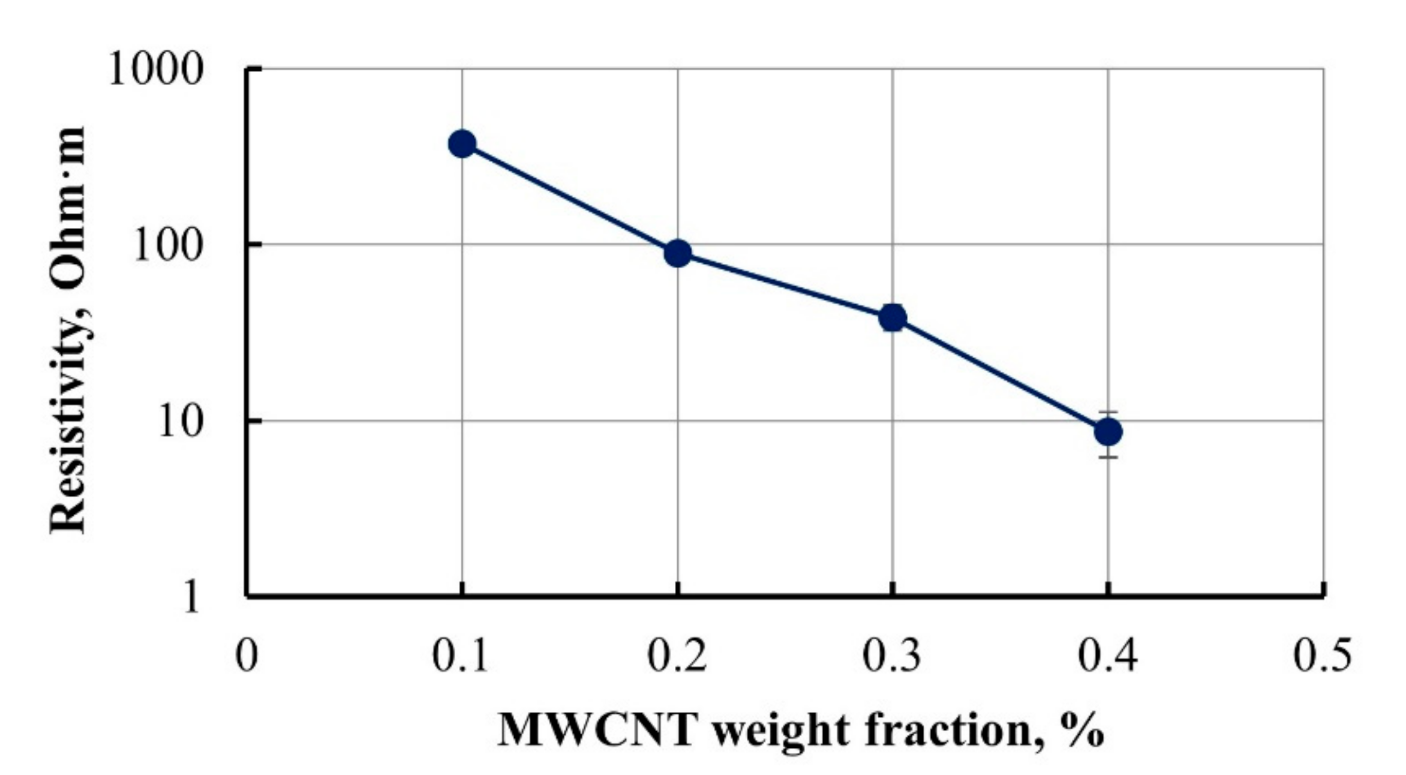


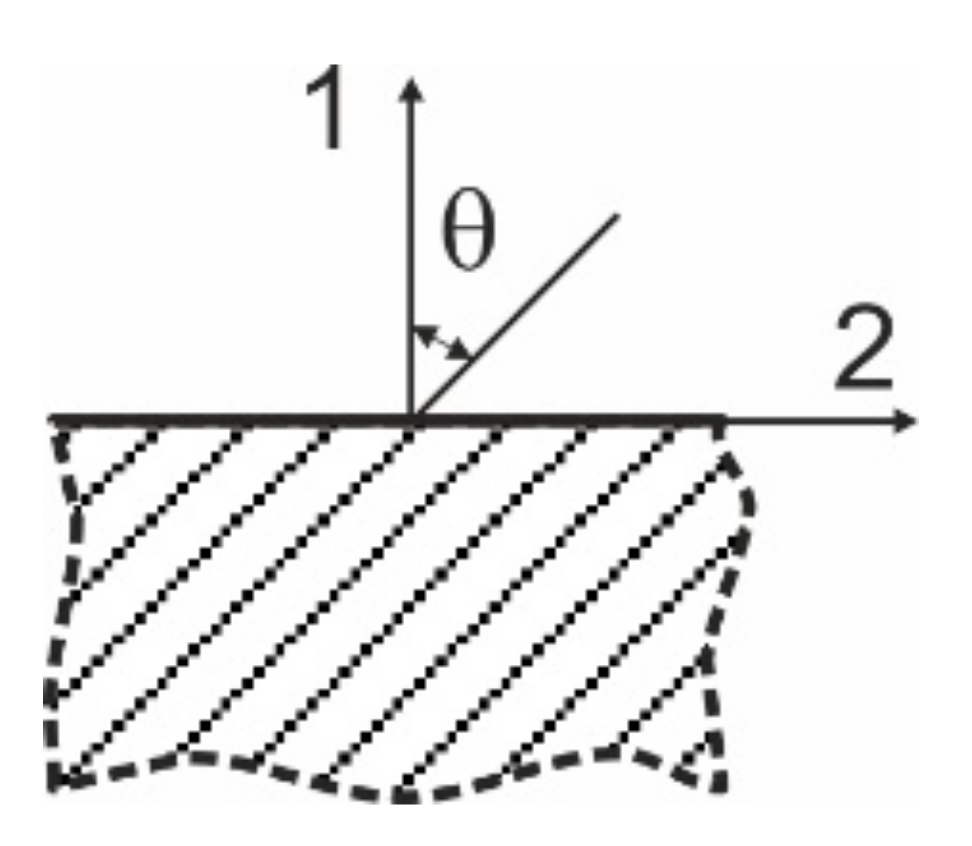



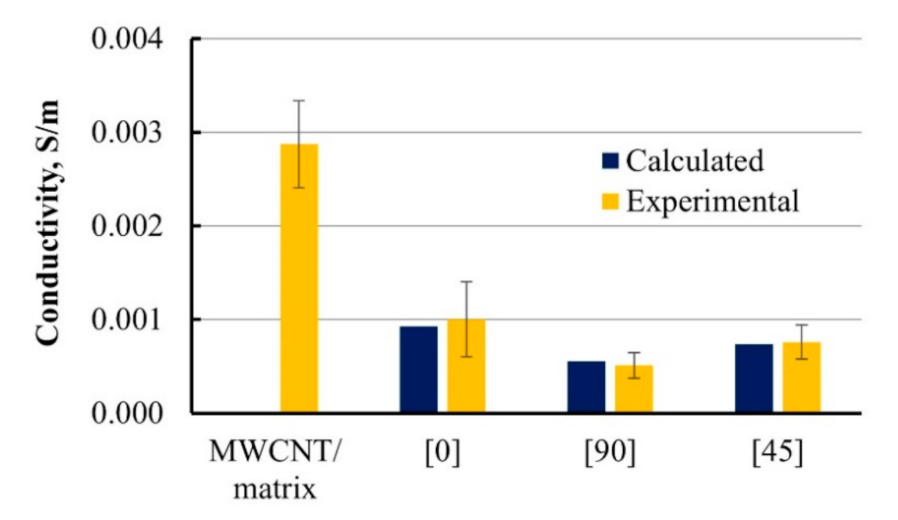

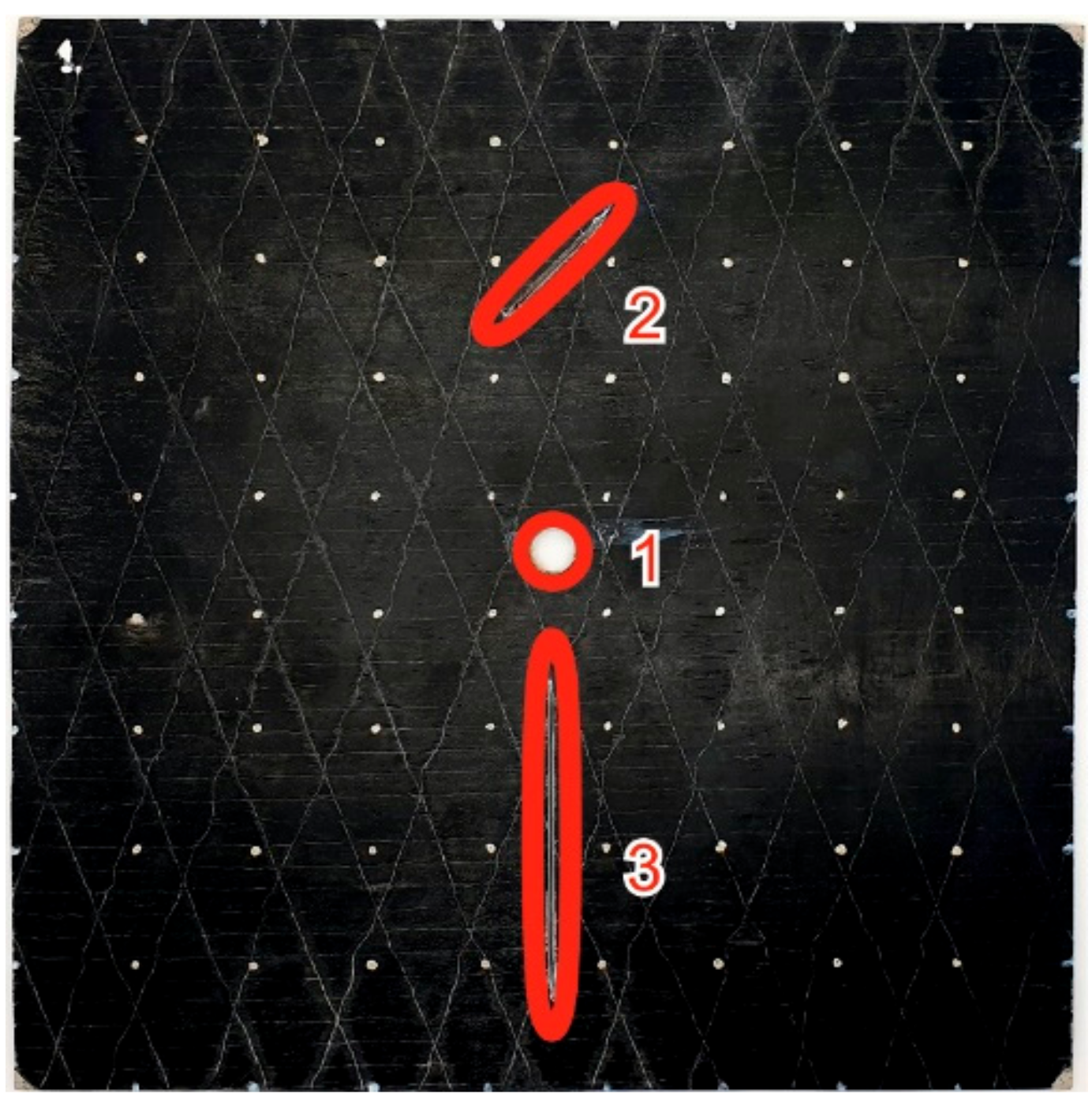
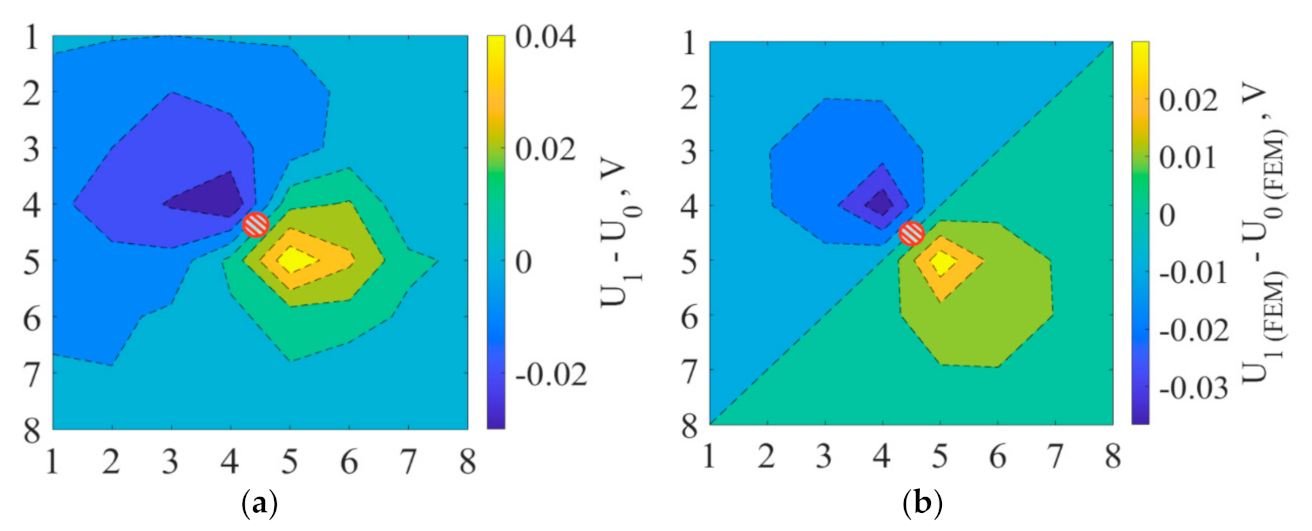

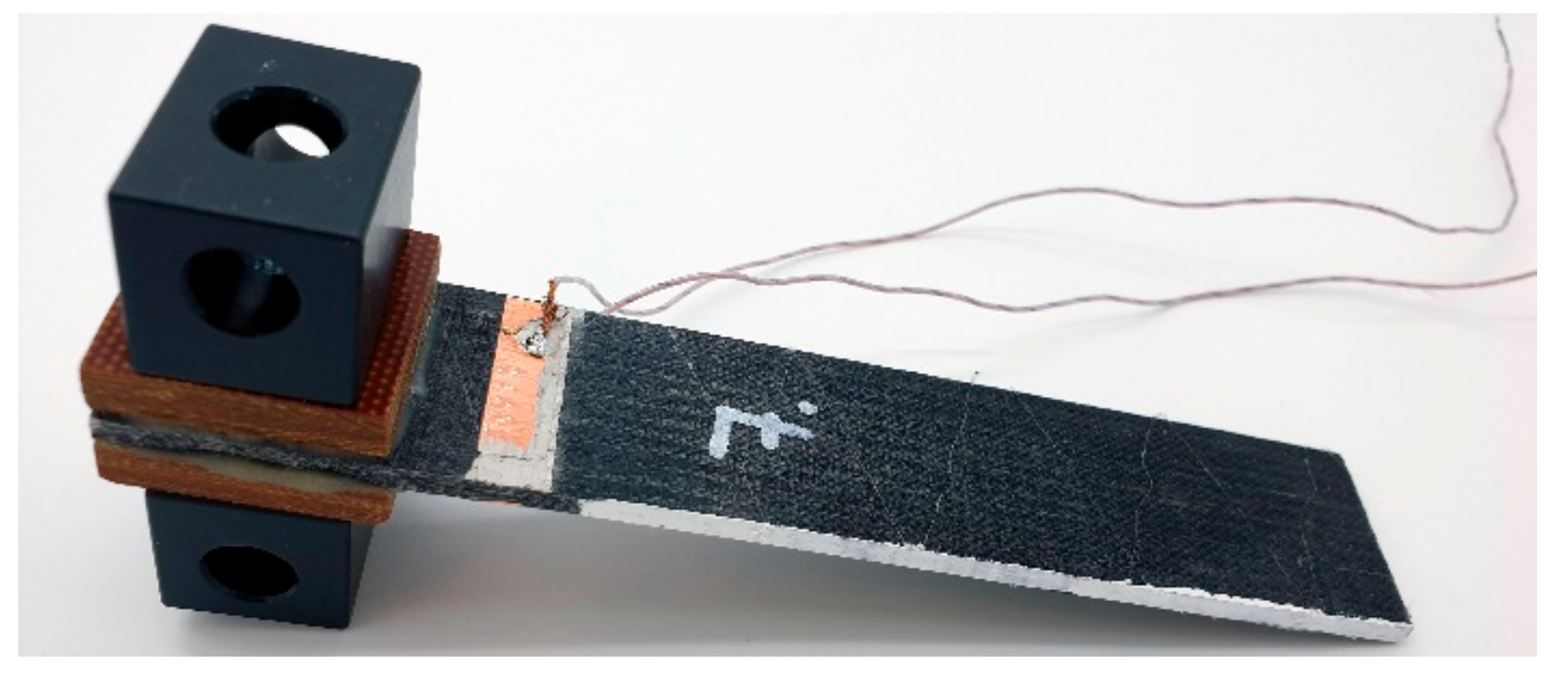

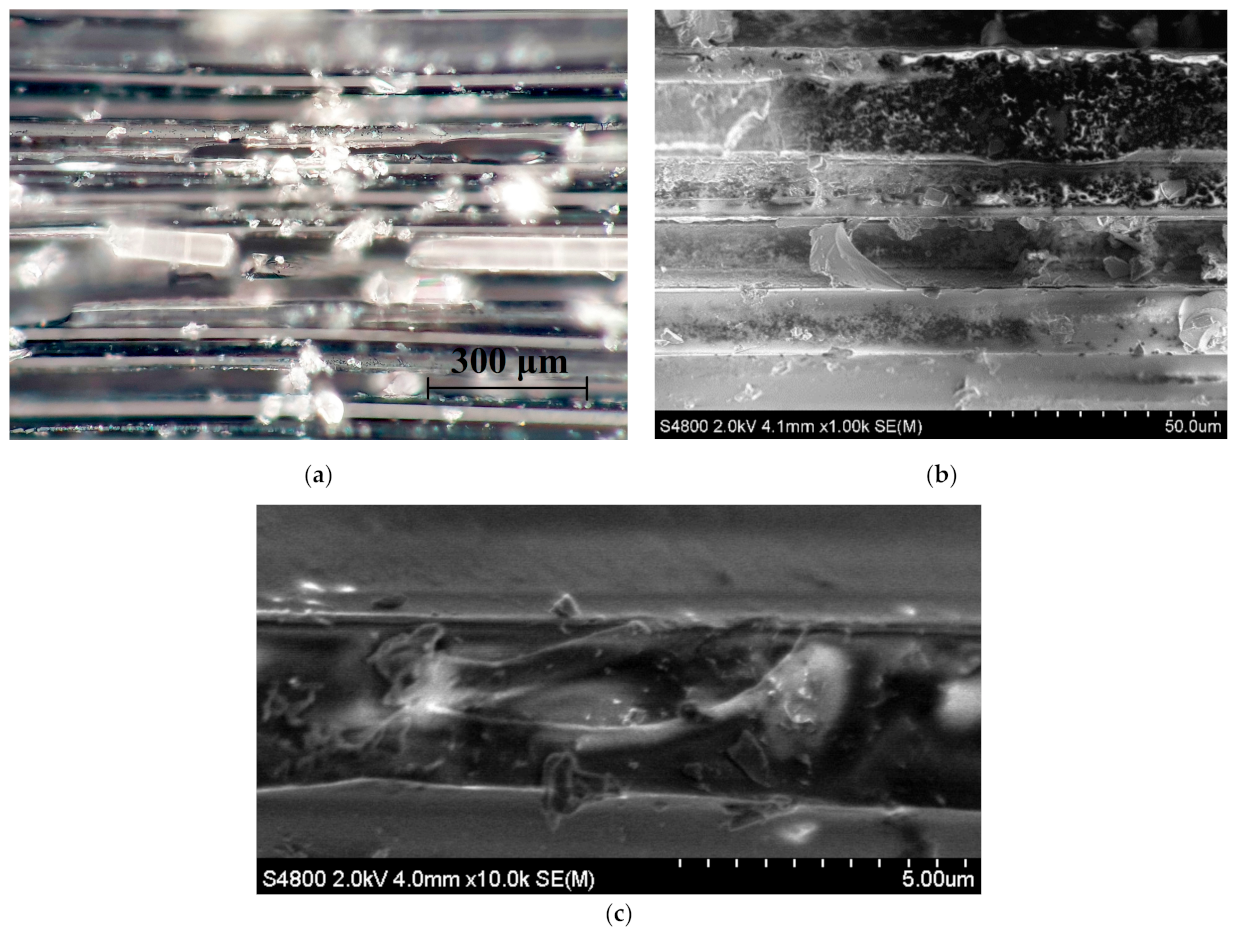
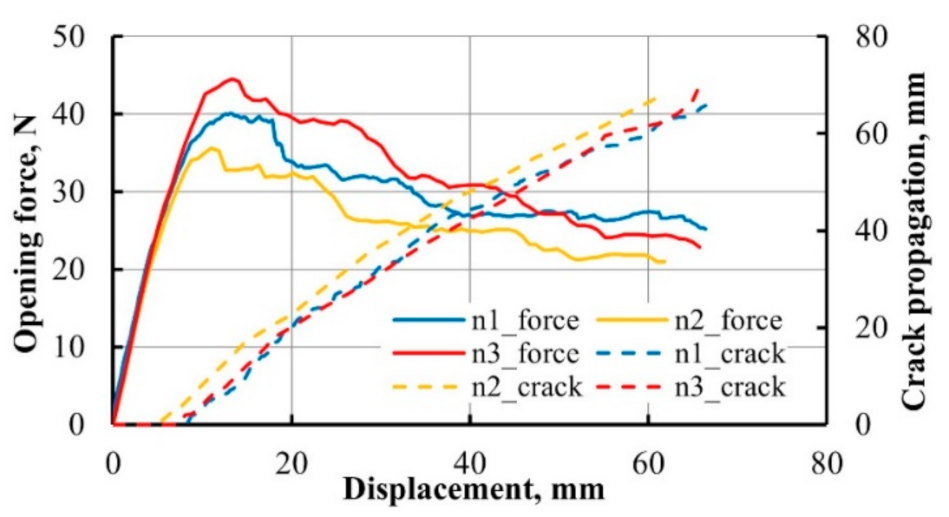
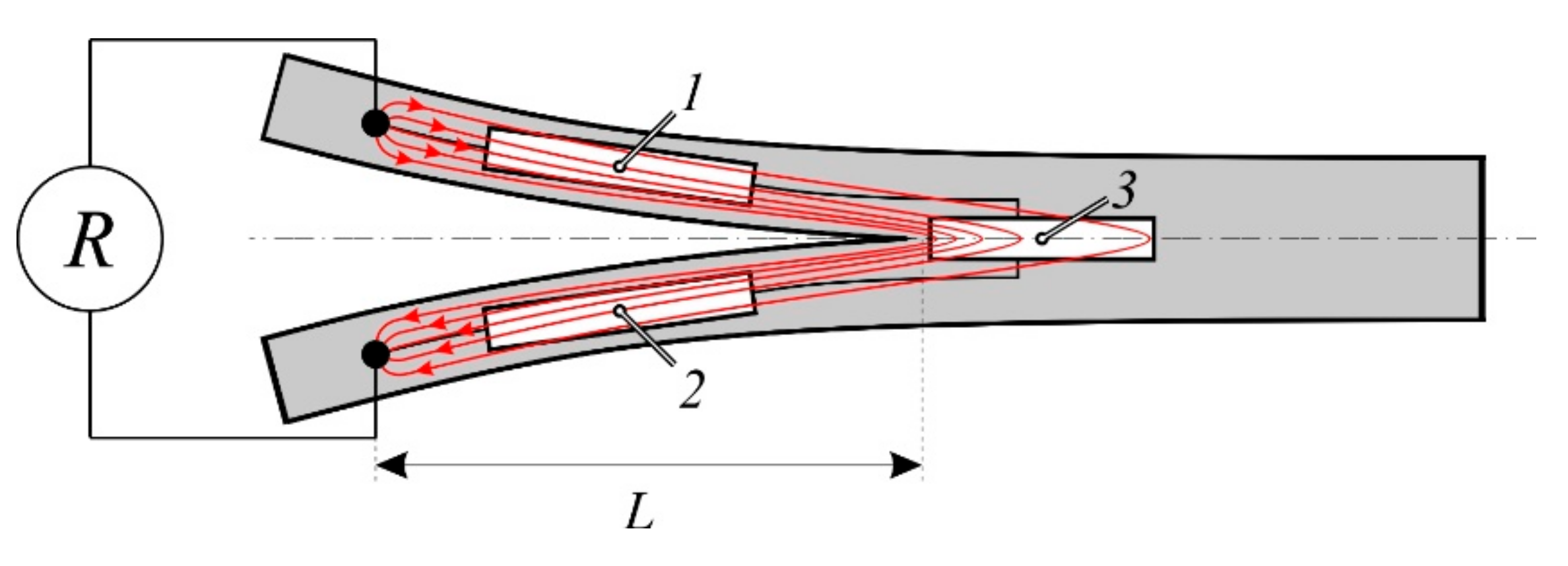


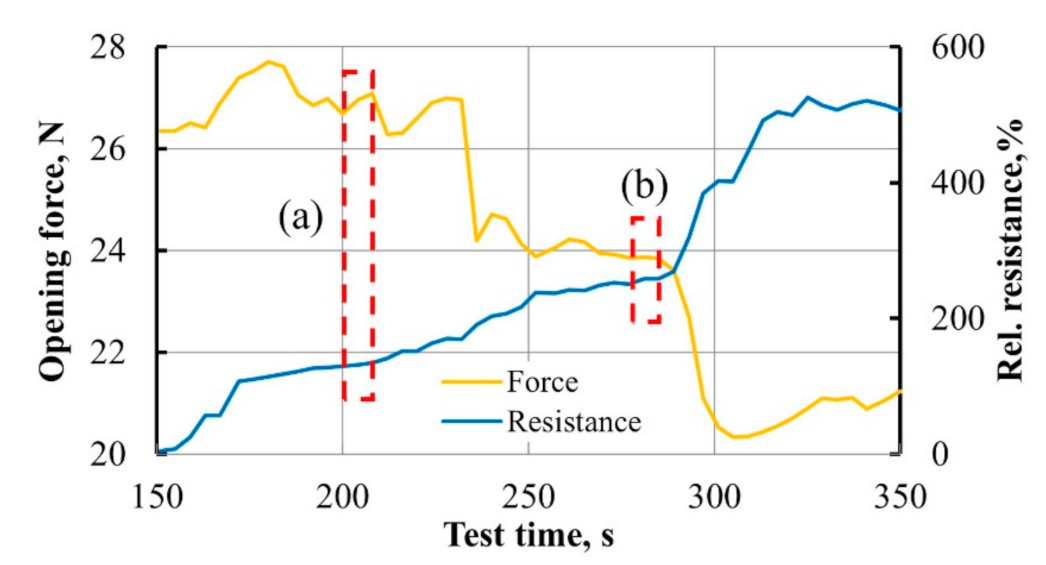
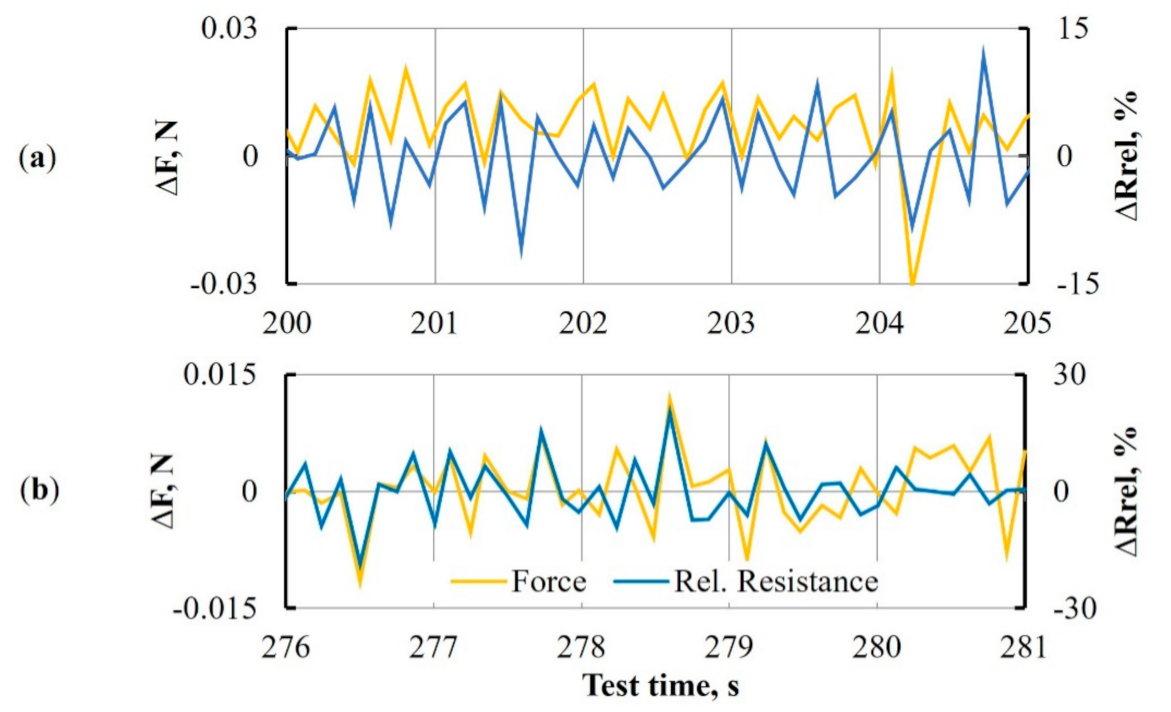
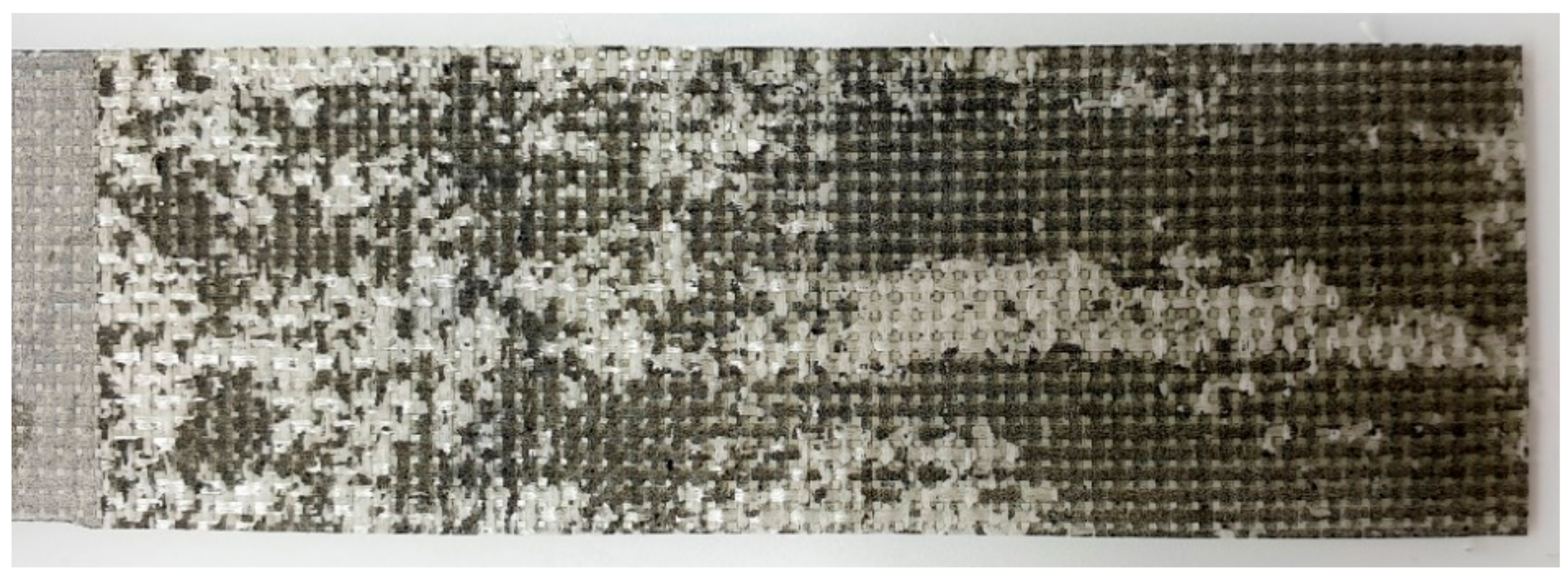
| Material | Parameter | Units | Value |
|---|---|---|---|
| Epoxy resin Biresin ® CR122 | E-Modulus | GPa | 2.8 [30] |
| MWCNT NC7000™ | Volume resistivity | Ω·cm | 1·10−4 [31] |
| Avg. diameter | 10−9 m | 9.5 [31] | |
| Avg. length | 10−9 m | 1500 [31] | |
| Glass fabric by Havel Composites | Area density | g/m2 | 500 [32] |
Publisher’s Note: MDPI stays neutral with regard to jurisdictional claims in published maps and institutional affiliations. |
© 2021 by the authors. Licensee MDPI, Basel, Switzerland. This article is an open access article distributed under the terms and conditions of the Creative Commons Attribution (CC BY) license (https://creativecommons.org/licenses/by/4.0/).
Share and Cite
Stankevich, S.; Bulderberga, O.; Tarasovs, S.; Zeleniakiene, D.; Omastova, M.; Aniskevich, A. Electrical Conductivity of Glass Fiber-Reinforced Plastic with Nanomodified Matrix for Damage Diagnostic. Materials 2021, 14, 4485. https://doi.org/10.3390/ma14164485
Stankevich S, Bulderberga O, Tarasovs S, Zeleniakiene D, Omastova M, Aniskevich A. Electrical Conductivity of Glass Fiber-Reinforced Plastic with Nanomodified Matrix for Damage Diagnostic. Materials. 2021; 14(16):4485. https://doi.org/10.3390/ma14164485
Chicago/Turabian StyleStankevich, Stanislav, Olga Bulderberga, Sergejs Tarasovs, Daiva Zeleniakiene, Maria Omastova, and Andrey Aniskevich. 2021. "Electrical Conductivity of Glass Fiber-Reinforced Plastic with Nanomodified Matrix for Damage Diagnostic" Materials 14, no. 16: 4485. https://doi.org/10.3390/ma14164485
APA StyleStankevich, S., Bulderberga, O., Tarasovs, S., Zeleniakiene, D., Omastova, M., & Aniskevich, A. (2021). Electrical Conductivity of Glass Fiber-Reinforced Plastic with Nanomodified Matrix for Damage Diagnostic. Materials, 14(16), 4485. https://doi.org/10.3390/ma14164485










